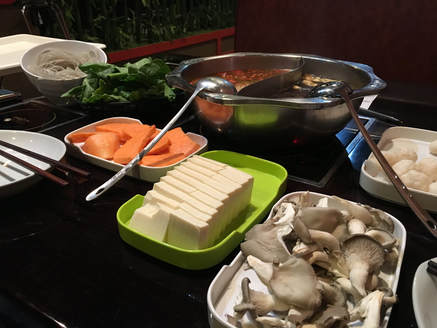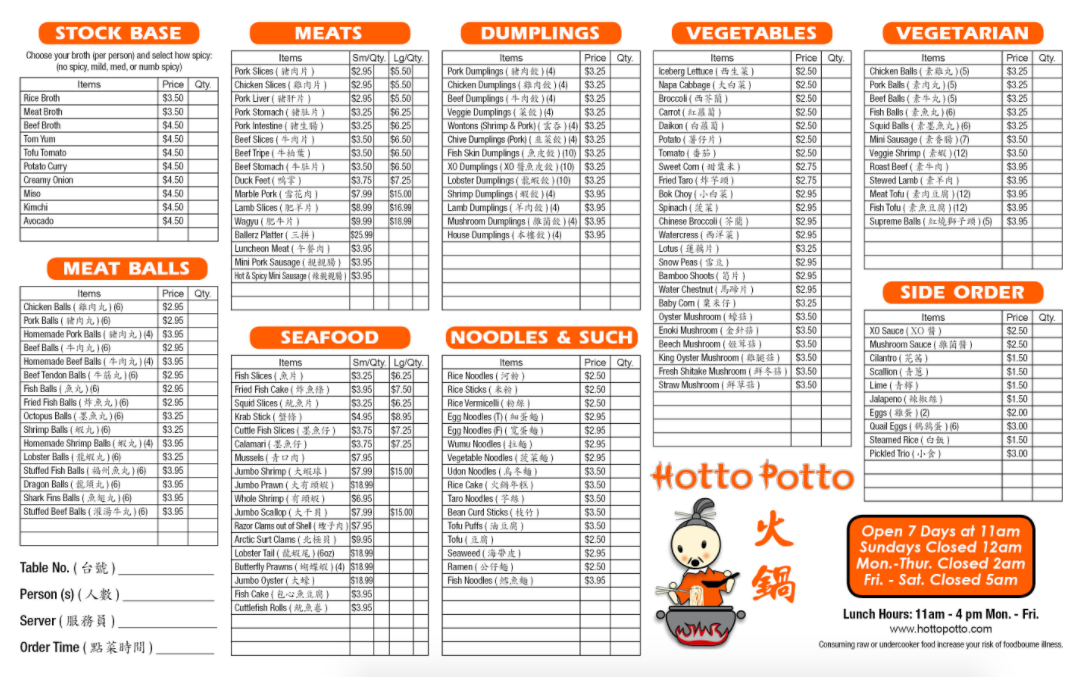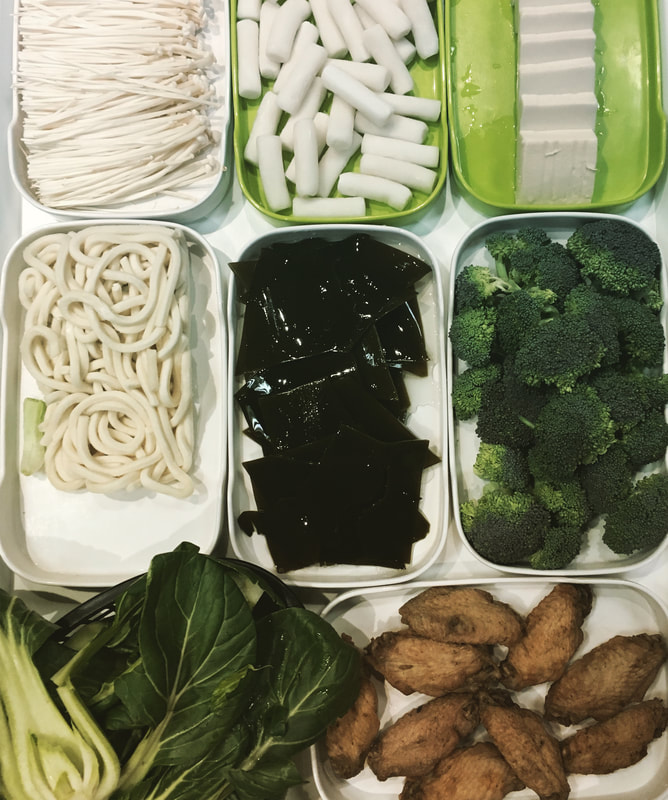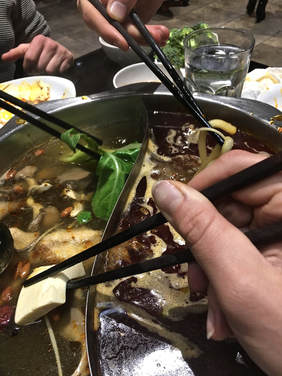Chinese hot pot, the original
With beginnings traced as far back as the Jin dynasty, hot pot remains a culinary favorite throughout Eastern Asia, Japan, and the South Pacific. While it varies drastically from region to region, each variation has the basics: raw ingredients including meats, starch, and vegetables, a hot, flavored broth, and plenty of sauces for dipping. The idea is to cook your raw foodstuffs in the hot broth, and then use the dipping sauces for extra flavor.
Common ingredients & traditions for hot pot based on region:
ordering hot pot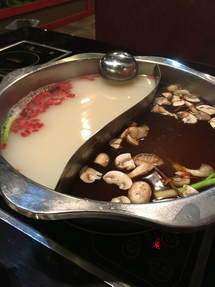
Now that I've got your palates wet for hot pot, we can discuss where should you go to find it, and how it works.
The best place in St. Paul for Chinese hot pot is Little Szechuan in the Little Mekong neighborhood, but I'm sure you could do a search to find what's closest to your own area. Bring your friends and make it a fun social gathering - this meal is always best shared with a group. Although it could be a fun first date, be warned: it does get messy. First, you select your broth. Sometimes you'll have the option for two at once (a ying yang pot, pictured) which is best for variety; one side spicy, one side mild, for example. Next, you'll want to choose your meats, starches, and vegetables. While you wait for the pot to arrive at your table with the foodstuffs, get your sauces ready and let the socializing begin. Discuss your plan of attack - there's no wrong way to do it, but you'll find that some things cook differently, longer, or shorter, than others. When the broth comes to temperature (it will typically come to a rolling boil), add your ingredients one-by-one and wait. Cook times vary for each ingredient, but do be careful: "hot" pot is no misnomer - it does get scalding hot. Let the cooked items cool slightly before dipping and consuming. DIY hot pot
First things first, you'll need equipment. Before you gather your ingredients, make sure you have the necessary tools:
Broth: Keep it simple and use a chicken, beef, fish or vegetable broth, or purchase a package of ready-to-use hot pot broth. Add other aromatics like jujube, ginger, bamboo, chili, or mushrooms. Dipping Sauces: just like your broth, this can be as easy or complex as you want. Purchase pre-made sauces -if you like- or decorate your table with chili oil, chili flakes, herbs, onion puree, sesame oil/paste, scallions, soy sauce, sweet & sour sauce, and oyster sauce. Assembly: gather your tools around the table and heat the broth in the pot using the portable burner. Each person can make their own concoctions of sauces in the small bowls while the broth comes to temperature. Arrange your ingredients on platters combining raw meats on one and raw veggies and starches on another, keeping like ingredients together. When the hot pot is ready, submerge your foodstuffs using your chopsticks and wait until cooked. Use the spoon/strainer to fish out the food that falls from your chopsticks. Dip in your sauce, as needed, and eat. And there you have it: DIY hot pot.
0 Comments
Leave a Reply. |
SEARCH ARTICLES BY CATEGORYAll Dough & Noodle Main Nosh Sauce Or Spread Skin Soups & Stews Spices Sweets READ NEXTMOST POPULAR |
Copyright © 2015 Ranelle Kirchner - All Rights Reserved - Designed by Adrian Daniel Schramm
